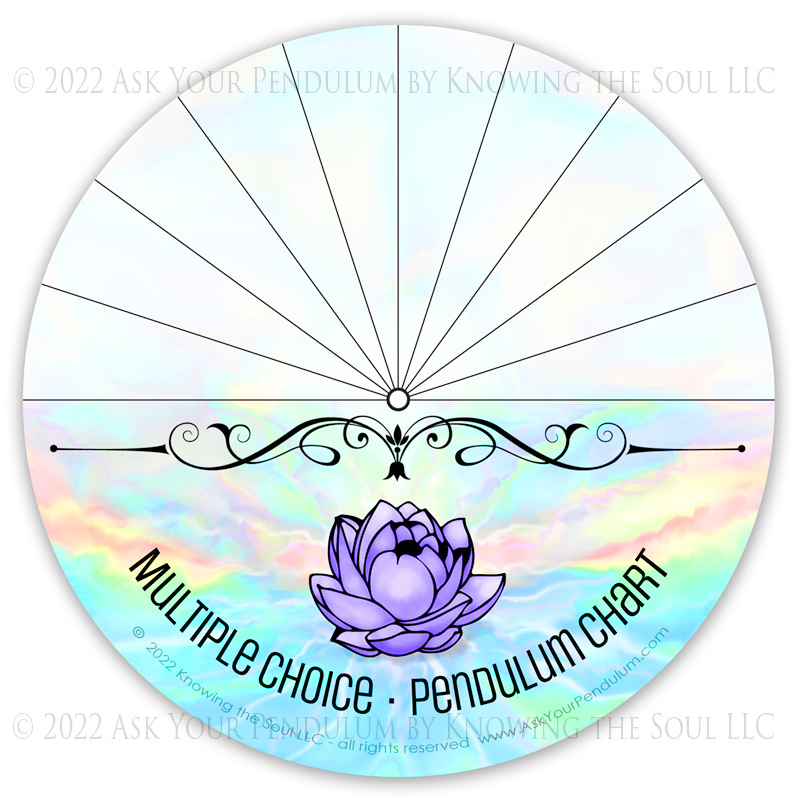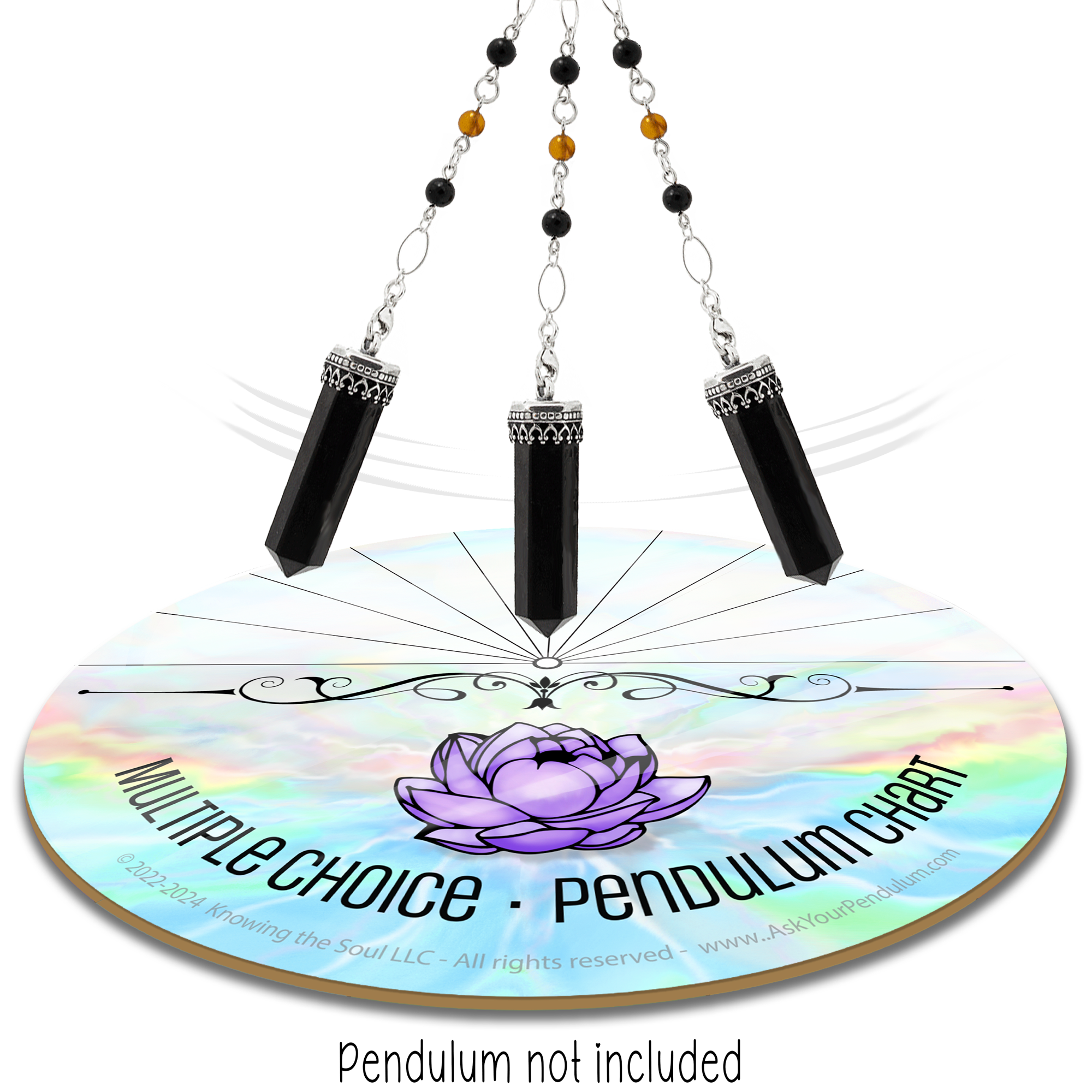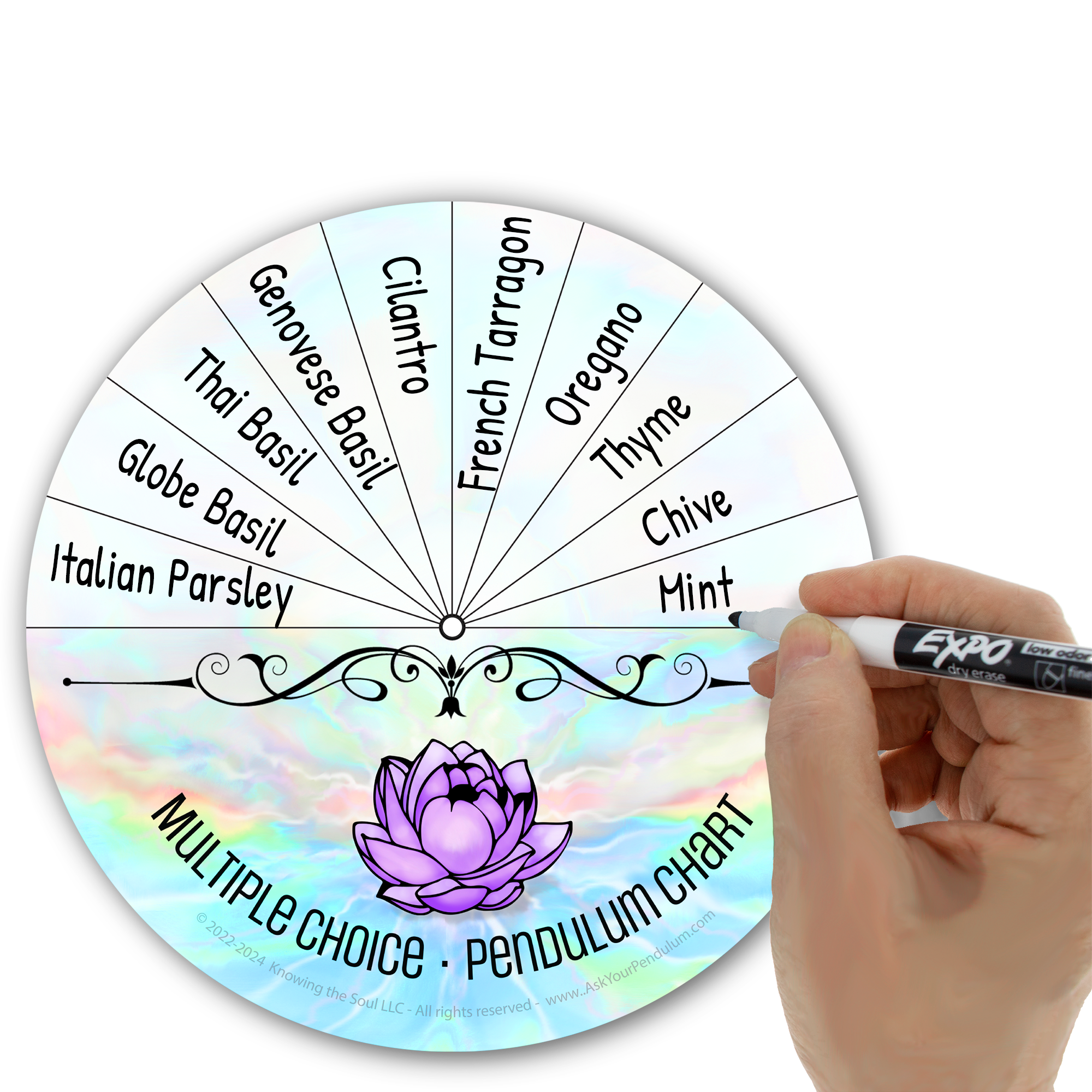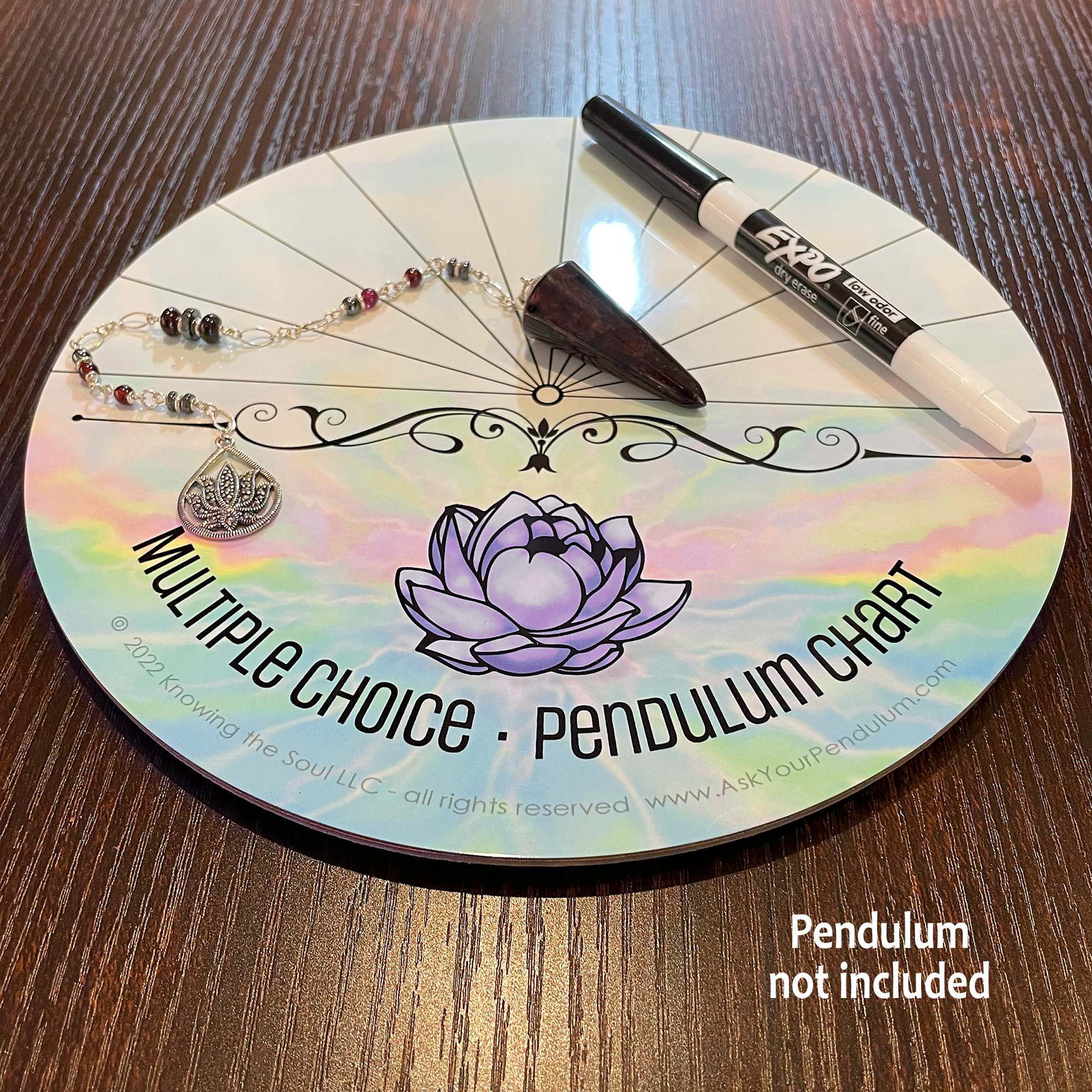Multiple Choice Pendulum Chart - 8 inch Aluminum, Includes Dry Erase Marker
This product is available for purchase at our Etsy shop.
This chart is available at our Etsy Shop.
Answering multiple choice questions is a great way to put your pendulum to work for you. With the included dry-erase marker, create your own set of choices and let your pendulum do the choosing. Wipe the surface clean and do it again, and again - as many times as there are questions!
Designed and created here at the Knowing the Soul studio, this 8 inch aluminum pendulum chart has a surface like a white board and features a lovely purple lotus on an ethereal background of blue, green, yellow and peachy-pink. Included with chart is an instruction booklet that slips into a handy pocket on the back of the chart. Pendulum is not included.
Details
One black Expo Dry Erase low odor fine-tip marker is included with chart. You can use any type of dry erase marker with this chart. Surface wipes clean with tissue or cloth. Do not use permanent markers on the chart, unless you want the writing to be permanent.
The chart's rich, vibrantly colored artwork is permanently embedded into its specially coated glossy aluminum surface that won't fade or chip over time. Chart sits on four silicone foot-pads. 22 gauge aluminum chart surface is manufactured in the USA. Chart measures 8" wide/high and 1/3" high. It weighs 3 1/2 ounces. Each chart is handmade with love by Eva Browning.
2024 chart design copyright Knowing the Soul LLC. All Rights Reserved. Designed, printed, and packaged in the USA by Knowing the Soul LLC. A note from the creator: This chart is the product of my own hard work, research and/or creativity, to which I hold the copyright thereto and reserve all rights.
How to Use
The Multiple Choice chart allows you to customize the specific options that your pendulum will use to help you make a choice that has more than one potential answer. Using a fine point, “dry erase” marker that can be wiped off when done, this chart can be used and reused for a wide variety of topics.
- Decide on the question you will ask your pendulum and how you will phrase it. See page 3 for tips. For example, I will be setting up an indoor herb garden. I have ten spots that I can fill with a herb seed pods, but I’m not sure which herb pods to buy, so I’ll use this chart to help in my decision. My question will be “Of these herbs, which ones will thrive the most in my indoor garden?”
-
Identify potential answers to your question. There are ten wedges in this chart. If the number of potential options is fewer than ten, leave blank wedges in between each to avoid clumping them all to one side. It’s best to distribute options evenly across the chart. In the event that there are more than ten options that could answer your question, you can either break the options down into broader categories and then ask follow-up questions to refine, or you can divide the options into sets of ten or less and ask the same question for each set. (See also “Alternate Method” at the bottom of page 3.)
To set up the chart using the example of my herb garden, I’ll write in all the herbs I think I might like to grow. In no particular order, and using a dry erase marker, I write one herb name into each section: Italian Parsley, Globe Basil, Thai Basil, Genovese Basil, Cilantro, French Tarragon, Oregano, Thyme, Chive, and Mint. See example on page 2. - Place the chart on a flat surface in front of you, careful not to rub off the writing, and position it with options in the top half and the lotus blossom in the lower half of chart. If possible, sit up straight and put both feet flat on the floor.
- Clear your mind of expectations and predictions.
- Grasp the top bead or fob of your pendulum between your thumb and forefinger and arch your wrist slightly. Hold your pendulum so that it dangles about 1/2 inch above the hinge-point (the white dot at the center of the chart). Steady your elbow on the table, but not your hand that holds the pendulum. Let the pendulum dangle directly above the chart’s hinge-point.
- Ask your question and allow the pendulum as much time as it needs to get moving.
-
Observe the pattern of the pendulum’s movement. When it’s ready to answer, and as it gains momentum, the pendulum’s motion will take shape and show a repeating pattern. A steady swing that passes over the hinge-point in a straight line will indicate the option shown directly below the pendulum’s path. Depending on how you phrased your question, there may be more than one option that the pendulum will identify. If so, write them down as you go.
Note: If you aren’t sure if your pendulum is done, you can temporarily move off of the chart and, with your pendulum programmed for yes/no answers (or using a Yes/No pendulum chart), ask a clarifying question, such as, “Are there more herbs to report?”. Or if you need clarification about one of the choices, you can ask a specific yes/no question, such as, “Is Cilantro a good choice for my indoor garden?” .
Note: If the pendulum’s swing is not a straight line, but a circular, clockwise motion, it means “all options are valid”. If it moves in a counter-clockwise motion, it means “none of these options are valid.” - When you question is answered, clear the pendulum by touching its weight-stone to the palm of your free hand or on another surface.
- Wipe off chart with a tissue or soft cloth to return it to ready-to-use status. Do not use permanent markers on the chart, unless you want the markings to be permanent.
How to Phrase a Good Question
Be specific. Use names, dates, times, places, or anything that narrows the focus on the matter. Spell words out, try to avoid using abbreviations. Don't use the words "Should" or "Supposed to" in your phrasing.
Alternate Method - Using objects instead of words
If your question pertains to small objects that you have on hand, you can use the actual objects instead of written words. For example, let’s say that you want to select a crystal to carry in your pocket today. Instead of writing out the names of the crystals on the chart, you simply lay the crystals on the chart, one each to a blank section. This method works for any object small enough to fit into a section (i.e., jewelry, color swatches, food samples, coins, etc.).
Click here for tips and more information about use pendulum charts.





